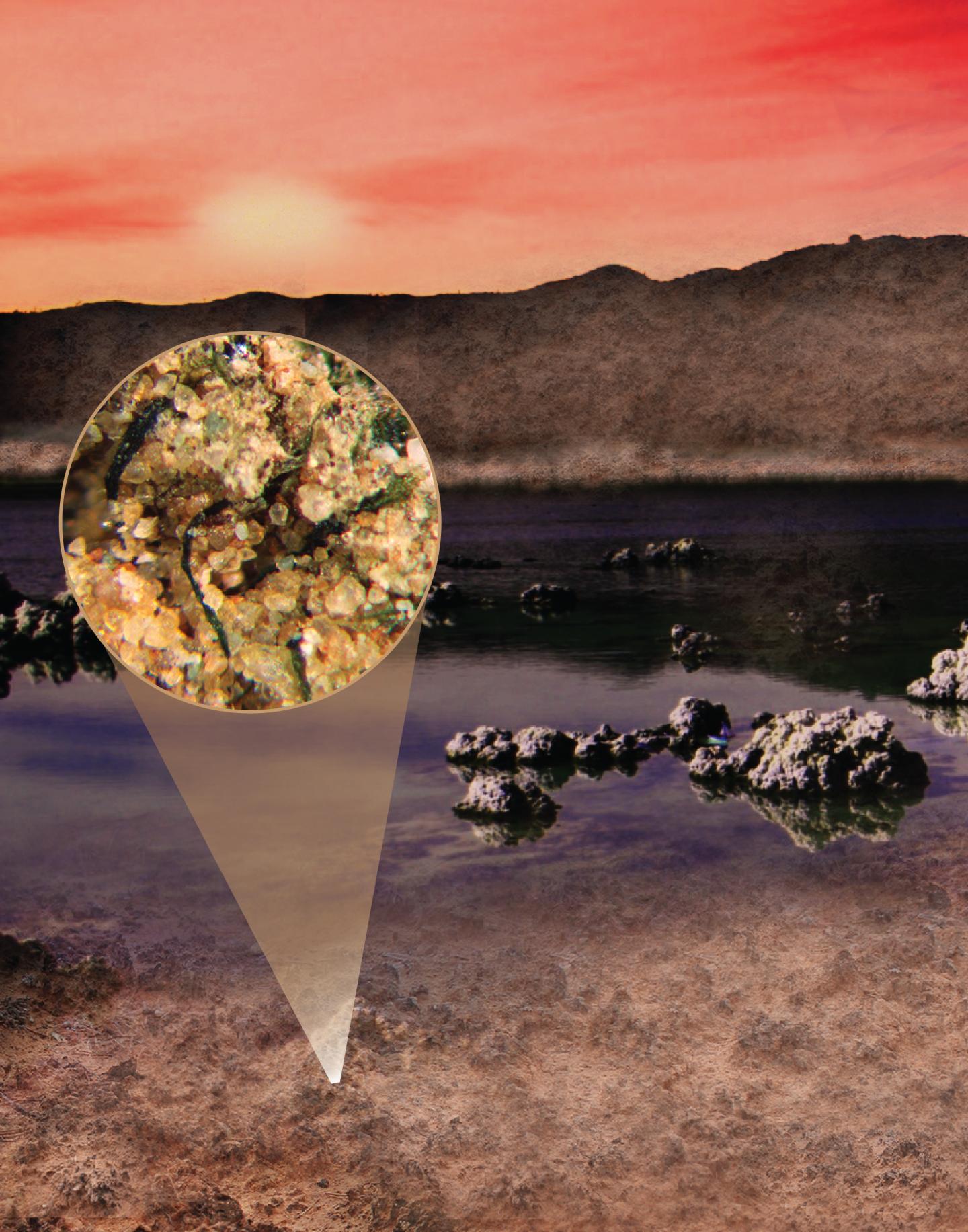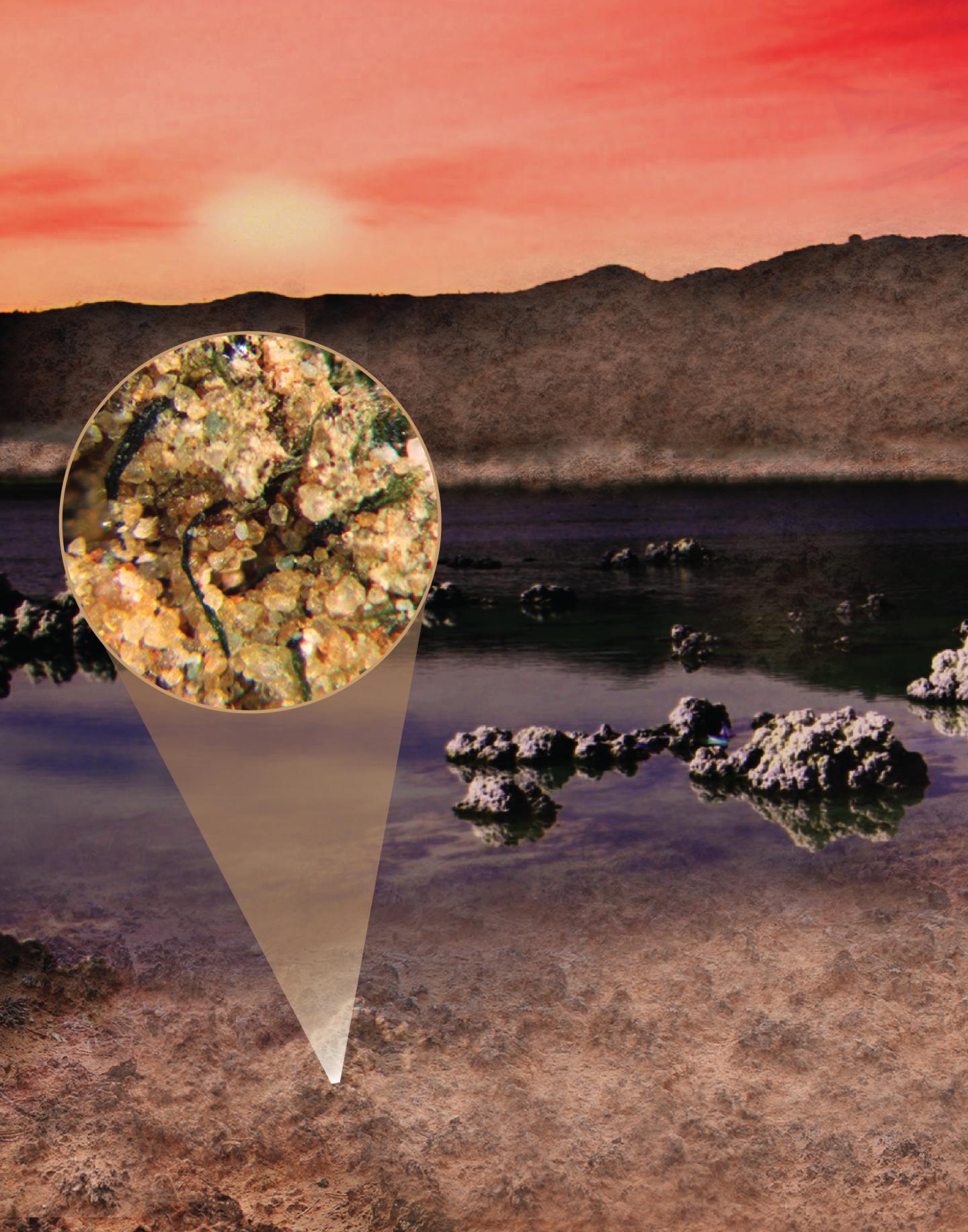
Credit: Estelle Couradeau
Like our oceans, today's continents are brimming with life. Yet billions of years ago, before the advent of plants, continents would have appeared barren. These apparently vacant land forms were believed to play no role in the early biochemical clockwork known as the nitrogen cycle, which most living things depend on for survival.
Now, ASU researcher Ferran Garcia-Pichel, along with Christophe Thomazo, from the Laboratoire Biogéosciences in Dijon, France, and Estelle Couradeau, a former Marie Curie Postdoc in both labs, show that biological soil crusts–colonies of microorganisms that today colonize arid, desert environments–may have played a significant role in the Earth's nitrogen cycle, helping to fertilize early oceans and create a nutrient link between atmosphere, continents and oceans.
Garcia-Pichel directs the Biodesign Center for Fundamental and Applied Microbiomics and is a professor in ASU's School of Life Sciences. Originally, a marine microbiologist, he became fascinated with the hidden world of microorganisms that lay on top of soils in deserts and other arid regions devoid of plant life. These living biocrusts have remarkable properties, thriving in extreme conditions, helping to anchor soils in place, so they resist erosion, and fertilizing rangelands and deserts.
The new research, which appears in the advanced online edition of the journal Nature Communications, suggests that analogs of these biocrusts spread across otherwise desolate continents of the early Earth, and contributed to establishing the nitrogen cycle essential for life as we know it today.
Evolving atmosphere
"This really early Earth was a very different planet in many respects, particularly in the composition of the atmosphere," Garcia-Pichel says. "Before the appearance of oxygenic photosynthetic microbes, like cyanobacteria that made oxygen–just like plants do today–the atmosphere was not oxygenated." This vast oxygen-free epoch lasted for half of Earth's 4.6 billion year history.
All this changed with something referred to by geochemists as the Great Oxygenation Event. "That was perhaps the single most important change in the nature of what the planet is. There are telltale signs of this in the rock record, so people have a good idea of when this happened–around 2.45 billion years ago, but conventional wisdom would have this happening in shallow oceans" Garcia-Pichel says.
Today, nitrogen makes up 78 percent of the atmosphere. It is a vital element in DNA, RNA and proteins, the key components of life. But the nitrogen found in the atmosphere is not suitable for use by most organisms. It must first be processed, through what is known as the nitrogen cycle. This occurs when prokaryotic organisms carry out nitrogen fixation, making atmospheric nitrogen available in a form useful to plants and animals for survival.
While it has long been assumed that the nitrogen cycle that arose early in the Earth's history, resulted from oceanic microbes during an ancient phase known as the Archean, new research suggests significant amounts of nitrogen came from land-based biological soil crusts.
Shifting perspective
"In the minds of many evolutionary biologists, the continents were irrelevant early in the Earth's history, because they are assumed to have been barren of life until the first plants appeared, around 0.4 billion years ago. So all the models of how elements were cycled were based on interactions between the ocean and the atmosphere," Garcia-Pichel says.
Recently however, evidence began to appear suggesting that the continents were far from the sterile land masses they had been portrayed as. Instead, intricate microbial communities similar to biocrusts found in present-day desert environments, colonized the early continents. Traces of their presence date to 3.2 billion years ago, well before the Great Oxygenation Event helped set the stage for the Cambrian explosion–a sudden burst of life that gave rise to most of the world's animal phyla.
The researchers note that today, such biocrusts occupy roughly 12 percent of the Earth's land. They are composed of filamentous cyanobacteria, which perform most of the biocrust's carbon and nitrogen fixation and provide nutrients to the rest of the crust microbiome, while bonding soil grains together and providing microbial communities with erosion resistance.
"These communities live on light," Garcia-Pichel says. "When plants evolved and started to accumulate, this marked their demise. There's no light on the soil anymore because of plant litter accumulation". However, in an early world, before the evolution of plants, there would be nothing to impede their colonization of the continents, where conditions for their growth and development would have been considerably less harsh.
As Garcia-Pichel notes, watery environments like oceans and lakes provide superior conditions for fossilization, making the detection of ancient biocrust colonies on land more challenging. This may account in part for the neglect of continental biocrusts as the primeaval land-based ecosystems for much of the planet's history.
A new picture emerges
The team carried out a meta-analysis of their earlier data combined with other relevant literature on the cycling of nitrogen by modern biocrusts. Results demonstrate that nitrogen-cycling biocrusts are capable of importing nitrogen gas from the atmosphere and exporting ammonium and nitrate.
Quantitative analysis suggests that biocrust contribution to nitrogen cycling during the early history of the Earth would have been significant, even with limited colonization of the pre-Cambrian continents.
The notion of land-based life forms–the biocrusts–providing a significant contribution to the Earth's early biogeochemistry represents a significant paradigm shift. New research should help establish just how far back in Earth's record these microbial biocrusts extend and help explore their contributions to the cycling of other elements, like phosphorus.
Desert defenders
Garcia-Pichel's center is also involved in efforts to restore biocrust communities in desert environments, where urbanization and other factors have seriously degraded them. While these communities show astonishing resilience to the harsh conditions of both desert and polar regions, they are highly sensitive to human interference, including trampling, vehicle traffic and agriculture.
Garcia-Pichel estimates that in the areas around Phoenix, where he works, only 5 percent of the original biocrusts remain. Further, climate change will not only alter the demographics of biocrusts, which vary in their composition according to region, but will render some desert environments too severely arid for their survival. Restoration of these communities is currently a challenging undertaking, part science and part art. The right mix of microbial players must be present for newly seeded communities to survive and flourish.
"When you destroy the crust, you make the soil unstable and very prone to erosion," Garcia-Pichel says. "Areas that are deforested of crusts are sources of fugitive dust and sand. The natural protection of the desert is not there, and even moderate winds can raise a haboob. We have been funded for the last 5 years to develop ways to grow these crusts and reseed them in the field. That's an applied part of our work, which is a new thing for our lab."
###
Written by: richard harth
Senior Science Writer: Biodesign Institute at ASU
[email protected]
Media Contact
Dianne Price
[email protected]
@ASU
http://asunews.asu.edu/
Original Source
https://biodesign.asu.edu/news/continental-microbes-helped-seed-ancient-seas-nitrogen





